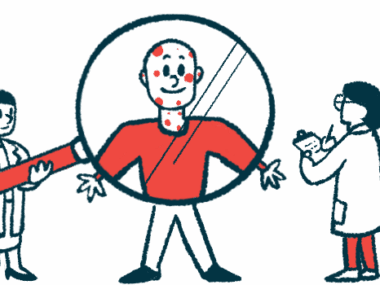My comical attempts at shaving in the shower
Personal hygiene can be difficult to maintain with a rare disease
Written by |

Precariously balancing my right foot on the ledge proved difficult after having lost so much muscle mass over the past six months. My left leg, which was supposed to be supporting the bulk of my weight, began to tremble. Steam rose around me, setting the scene, but it made me feel a little lightheaded. Who knew shaving would be like competing in an Olympic sport?
Many of my columns focus on the heavier side of living with a rare disease. So today, I want to talk about a lighter and somewhat comical topic: the challenges of shaving and taking a shower while sick.
Before I talk about this struggle, I want to note that shaving is a personal choice. Some people like to shave or wax their body hair, and some don’t. Either is OK. Personally, I choose to shave.
Body hair takes a back seat
In September 2020, my life changed forever when I nearly died of a rare disease called atypical hemolytic uremic syndrome (aHUS). Spending nearly two months in the intensive care unit (ICU) was humbling. I suffered multiorgan failure and endured dialysis, plasmapheresis, biopsies, 18 blood transfusions, immunizations, and antibody therapy.
While I was dying, body hair was obviously the least of my concerns. But something I’d never realized is that ICU patients aren’t really allowed to shower or bathe. Even if patients are mobile, they’re usually considered a fall risk, and a shower is the easiest place to fall. During my stay I was the only ICU patient who was fully awake and able to walk. Most others were in a coma, hooked to ventilators, or unconscious for other reasons.
My dialysis port was connected to a catheter that hung out of my chest. This port cannot get wet for any reason, as that can easily lead to infection, so showering can be difficult.
Not only did the port make showers hard, but I’d also lost nearly 30% of my muscle mass while in the hospital. This is a common occurrence; studies show that ICU patients can lose 20% of their muscle mass in just 10 days. Standing for several minutes in the shower was nearly out of the question for me during my stay.
When I finally came home for good, the first thing I wanted to do was to take a long, hot bath. After two long months of no real bathing or shaving, I carefully climbed into my garden tub. It was by far one of the most amazing things I’d ever experienced. It’s strange how life events can give something so trivial an entirely new meaning.
Shaving in the bathtub was fairly easy because I could sit. But after five long months, I was able to stop dialysis and have my port removed. This was game-changing for me, as it meant I could start taking showers again.
That brings us back to the opening of today’s column: my Olympian efforts at shaving in the shower. I’ve regained some of my strength since I became ill in 2020, but I still struggle with muscle loss, edema, May-Thurner syndrome, and other symptoms caused by aHUS and stage 4 chronic kidney disease. Standing, twisting, and bending to shave everything I want to shave is like its own stand-up comedy hour. It makes me laugh every time.
Given the scope of everything I’ve been through, if shaky legs and awkward positions in the shower are my only complaint of the day, then that’s an issue I can handle. I’m very fortunate to have regained so much independence, despite nearly dying and needing antibody therapy for the rest of my life. Laughing about the smaller inconveniences helps me get through the tough days.
Note: aHUS News is strictly a news and information website about the disease. It does not provide medical advice, diagnosis, or treatment. This content is not intended to be a substitute for professional medical advice, diagnosis, or treatment. Always seek the advice of your physician or other qualified health provider with any questions you may have regarding a medical condition. Never disregard professional medical advice or delay in seeking it because of something you have read on this website. The opinions expressed in this column are not those of aHUS News or its parent company, Bionews, and are intended to spark discussion about issues pertaining to aHUS.






Leave a comment
Fill in the required fields to post. Your email address will not be published.